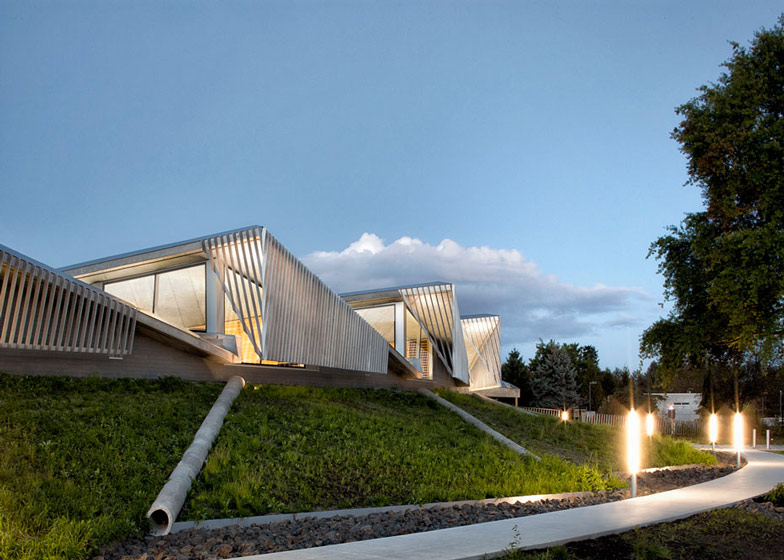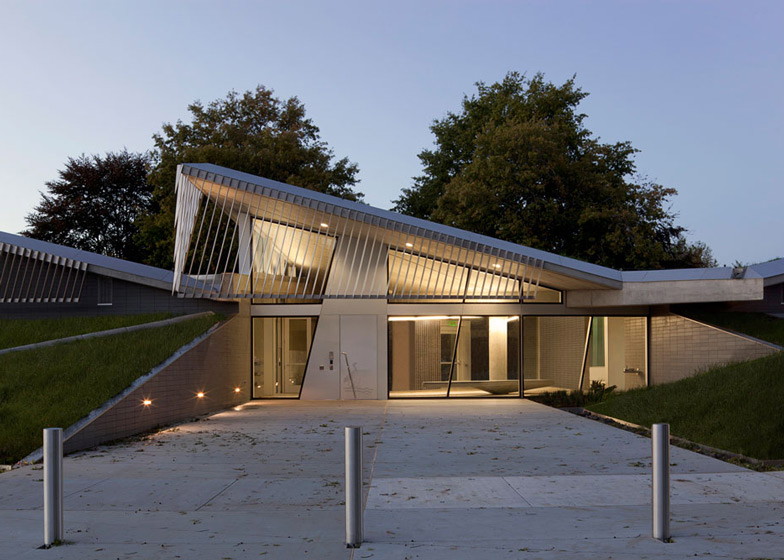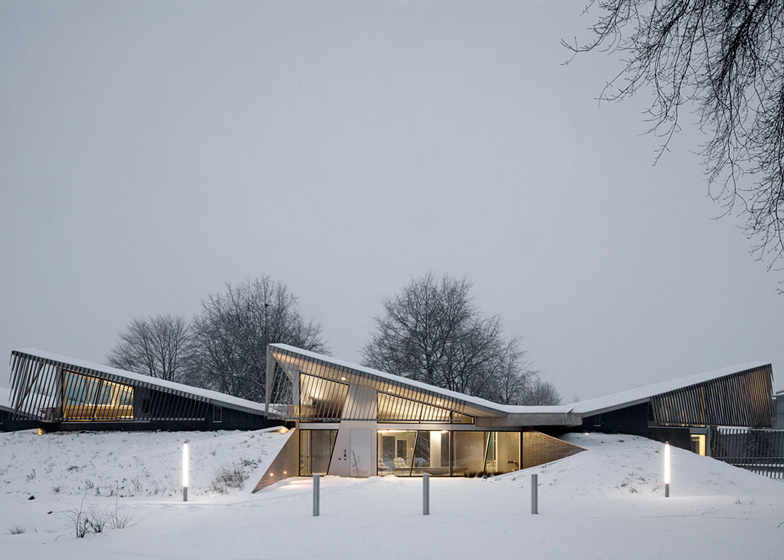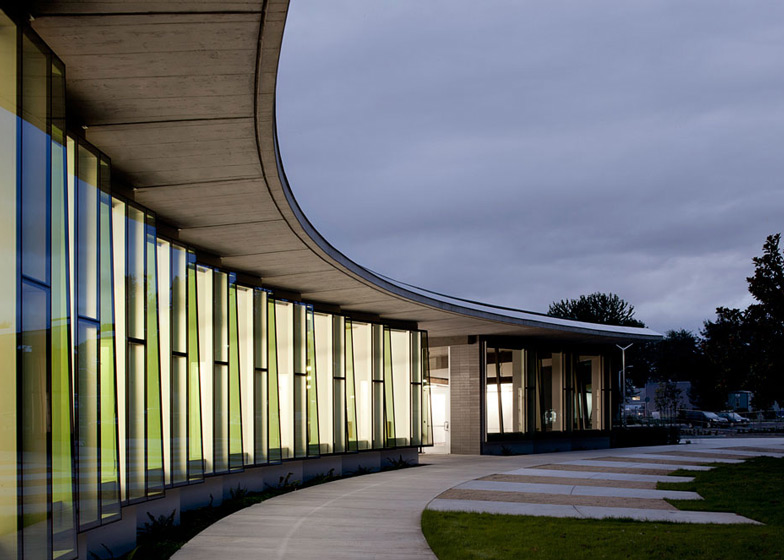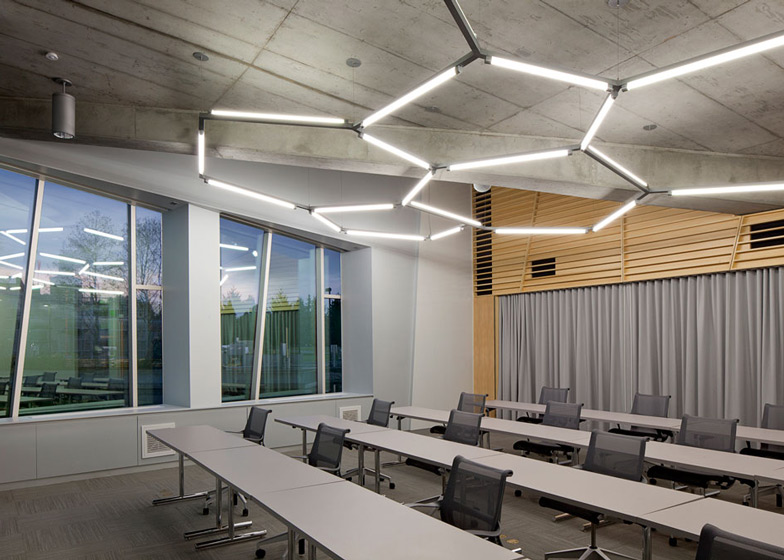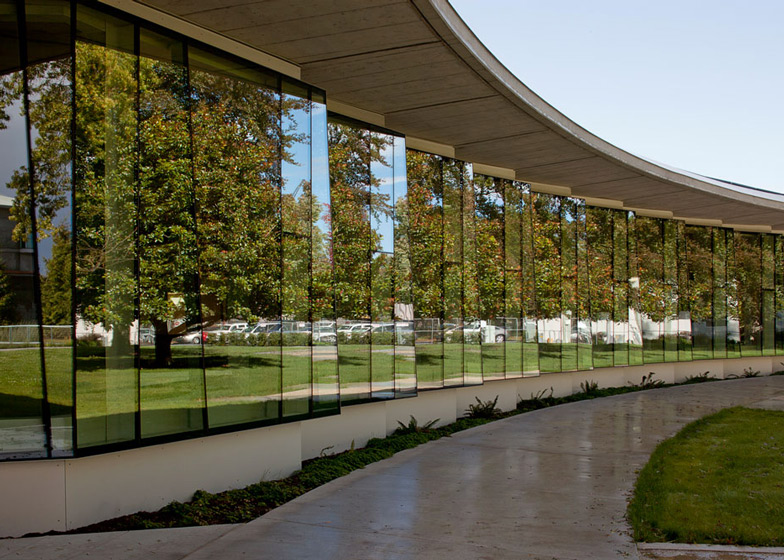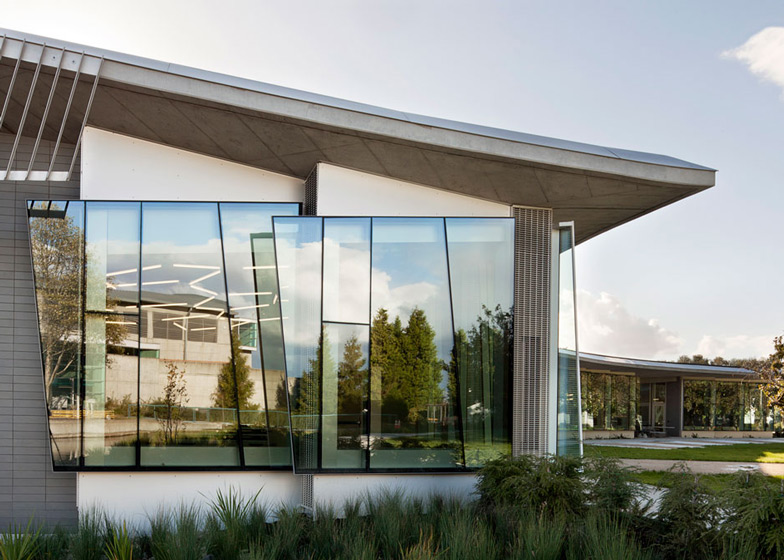Seven concrete fins provide a green roof that collects rainwater at this new engineering facility for a wastewater treatment plant in Portland, Oregon, by local firm Skylab Architecture (+ slideshow).
The Columbia Boulevard Wastewater Treatment Plant was built in 1950 to process the Portland's combined wastewater and stormwater, and now serves 600,000 residents. Skylab Architecture was tasked with creating new office facilities for the plant's engineers and public reception areas.
The single-storey structure has a curved plan designed to trace the path of the sun. The seven roof fins form a linear sequence over the top, turning the building into a series of angular grass-covered hills that appear to fold up from the landscape.
Each of these fins features an integrated collection system that channels rainwater down to the nearby Columbia Slough waterway.
"Inspired by the native landscape and its industrial past, the building is an elegant combination of landform, indigenous planting, formal geometry, and durable construction systems that support staff and the public interface," explained the architect.
In contrast with the plant-covered southern facade, the building's northern elevation comprises a glazed curtain wall with a serrated surface.
Workspaces for up to 36 engineers are located just behind, replacing the mobile units that had served as offices for the previous 16 years. South-facing clerestory windows bring light into these spaces from above, filtering through steel louvres.
A new reception welcomes guests to the plant, while meeting rooms accommodate talks and other public events. These spaces lead out to a grass lawn that functions as a common space for staff and visitors.
Photography is by Jeremy Bittermann.
Here's a project description from Skylab Architecture:
Columbia Building for The Columbia Boulevard Wastewater Treatment Plant
The Columbia Boulevard Wastewater Treatment Plant was constructed in 1950 as an industrial site to treat the City of Portland's combined wastewater and stormwater. In recent times, this municipal project has become increasingly public through efforts to highlight the importance of sustainable infrastructure.
The design proposed replacement office space for an engineering staff that over the past 16 years had worked from portable trailers at the site. It would also create a public face for the plant, programming generous visitor reception and public meeting space along with office space for engineers and construction management staff.
The single story structure is cast-in-place concrete and features an eco-roof and a visible stormwater collection system. An intentional demonstration, the building, stormwater system, and signage combine to foster a deeper relationship with the Columbia Slough ecosystem and the regional watershed.
Inspired by the native landscape and the site's industrial past, the building is a combination of landform, indigenous planting, formal geometry, and durable construction systems. The site is organised around a central green space that replaces an original axial road leading to the plant, a move that has improved vehicular circulation, plant security, and parking organisation.
The building has a photovoltaic system and also benefits from an on-site co-generation plant for power. The mechanical system is a heat pump system that utilises the plant's process water source. Exterior stainless steel solar shades and a system of clearstory windows create modulated daylighting that work in combination with a fully glazed north façade to connect the interior spaces with the central green space.
Owner: The City of Portland Bureau of Environmental Services
Architect: Skylab Architecture
Contractor: Skanska USA Building
Engineer: Solarc Architecture and Engineering. Inc.
Engineer: Catena Consulting Engineers
Landscape: 2-ink Studio Landscape Architecture
Lighting: Biella Lighting
Civil Engineer: Vigil-Agrimis Inc.
Environmental Graphics: The Felt Hat


